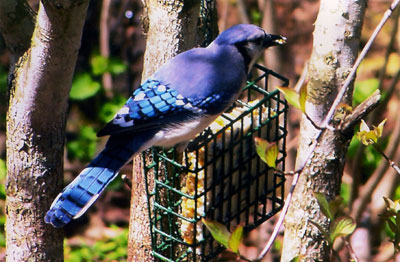All Nonfiction
- Bullying
- Books
- Academic
- Author Interviews
- Celebrity interviews
- College Articles
- College Essays
- Educator of the Year
- Heroes
- Interviews
- Memoir
- Personal Experience
- Sports
- Travel & Culture
All Opinions
- Bullying
- Current Events / Politics
- Discrimination
- Drugs / Alcohol / Smoking
- Entertainment / Celebrities
- Environment
- Love / Relationships
- Movies / Music / TV
- Pop Culture / Trends
- School / College
- Social Issues / Civics
- Spirituality / Religion
- Sports / Hobbies
All Hot Topics
- Bullying
- Community Service
- Environment
- Health
- Letters to the Editor
- Pride & Prejudice
- What Matters
- Back
Summer Guide
- Program Links
- Program Reviews
- Back
College Guide
- College Links
- College Reviews
- College Essays
- College Articles
- Back
Terrestrial Avifauna of the Chesapeake Bay Region: A Poetic Description
A misty veil rises over a damp spring morning pierced by the few golden rays able to penetrate the dense clouds overhead. A few lights flicker in the slumbering houses whose occupants are not witnesses to the auditory spectacle arising, advancing around them. But the few early-risers and fragrant spring flowers appreciate the slow yet sudden burst of song from a hundred delicate throats. The trees dance and the meadow grass bends to the chaotic symphony of calls around them. As the other fauna awakes woodpeckers drill through tree branches in search of breakfast. Mourning doves coo from tops of trees. Carolina chickadees lead the assortment of birds in a great, colorful parade to the feeders. Cardinals call from the most prominent perches. A precious mockingbird plays back all the songs in his repertoire at risk of provoking the wrath of a deceived bird as I saw it evoke in a female cardinal one afternoon. Bluejays screech, banishing the other birds from the feeders. Black-eyed juncos stretch their wings knowing that soon they will need to fly for hours on end for their yearly migration to the dark forest floors of Canada and the high altitude air of the western mountains. The rest of the suburban species trickle in, the titmice and sparrows followed by the flocks of robins. The squirrels stay in the background waiting until their opportunity to raid the unprepared feeders and defy those that are presents itself. As the day progresses and the clouds clear, vultures ride the thermals, scanning the ground below for the unfortunate deer or rabbit that met those two bright lights during the night. Higher still and regal in appearance soar raptors, beings of the freedom; red-tailed hawks and the occasional pair of bald eagles. Flying elegantly through the trees, largely unseen yet ever present, lurk sharp-shinned and cooper’s hawks ready to burst from their commanding perch to play their role in the cycle of life and snatch from the earth a jay, a cardinal; maybe an unlucky woodpecker. Among the beautiful European starlings, robins, and rusty blackbirds that emerge after the rains to eat the earth worms are the eastern bluebirds. Perched on a telephone wire they dive to grab an unsuspecting insect before flying back up to perch once more with there small flocks of 6 to 8. A hermit thrush scratches the ground under a tall conifer as eastern towhees pop in an out above. Abundant in their numbers, a pest to some and a blessing to others are the sparrows. At home in the trees more so than they are in the air as they scamper up the ivy clad bark are the elusive brown creepers. On the ground below them, seldom sighted a yellow-shafted northern flicker pecks away at the ground to discover a beetle or a trail of ants. Another woodpecker, larger and with a flaming crest flies above landing ever so often to find a tasty larvae hiding within a dead or decaying branch. Thus the Pileated, king of woodpeckers goes about its business.
Again and again this dance is repeated and life goes on. New arrivals come and go yet in some tree hollow nestled underneath their mothers soft belly, not yet born, the new generation awaits to awaken and see the beauty and bounty that nature is.

Similar Articles
JOIN THE DISCUSSION
This article has 0 comments.
